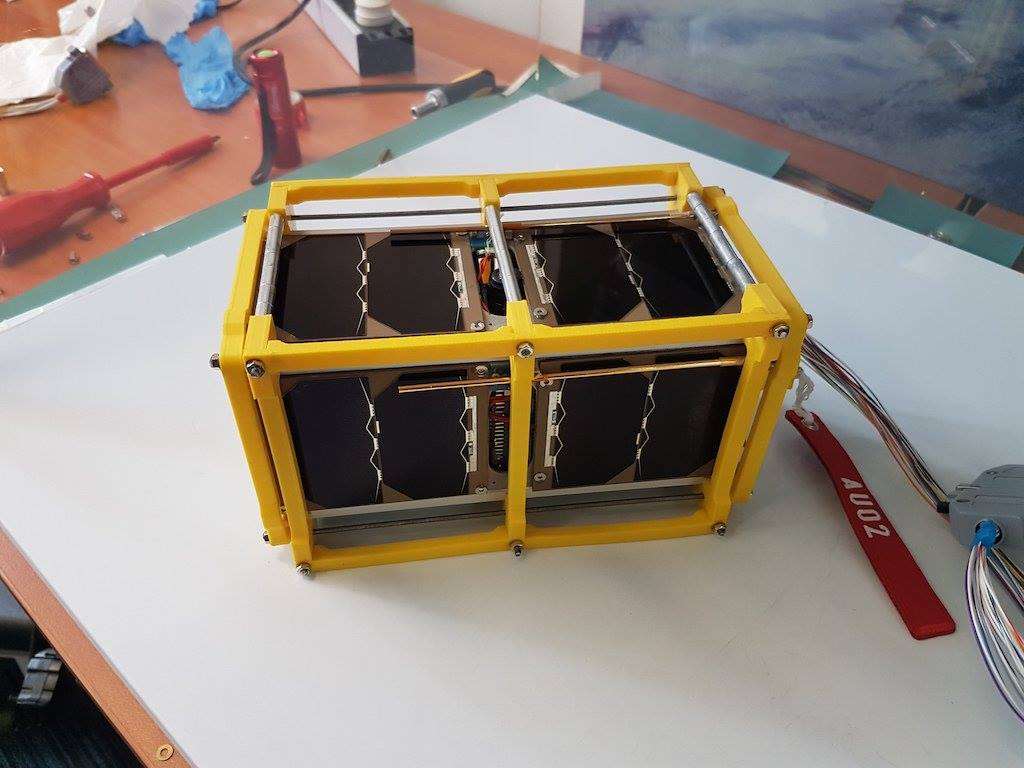Australia will contribute three tiny satellites to a major international project called QB50 that aims to better understand the thermosphere between 200km and 380km above Earth.
The satellites, known as cubesats, will be launched to the International Space Station in December by an Orbital ATK Antares rocket from the United States.
In total, 50 cubesats built by 48 universities and research institutes from 28 nations will be deployed from the ISS between a month or so after arrival, and drift down from the ISS’s orbit of 380 km to the thermosphere.
Researchers want to understand the thermosphere better because it is “vital for communications, weather formation and helps shield Earth from cosmic rays and solar radiation.”
“This region is poorly understood and hard to measure, and yet it’s the interface between our planet and space,” Australian Centre for Space Engineering Research (ACSER) director Andrew Dempster said.
“It’s where much of the ultraviolet and X-ray radiation from the Sun collides with the Earth, and generates auroras and potential hazards that can affect power grids and communications.”
ACSER is based at the University of New South Wales (UNSW) and had a hand in two of the three Australian cubesats accepted into the international mission.
Australia’s contributions are:
- ACSER’s UNSW-Ec0, which will study the atomic composition of the thermosphere;
- INSPIRE-2, a joint project between the University of Sydney, UNSW and the Australian National University which will measure the electron temperature and density of plasma in the region; and
- SUSat, a joint project between by the University of Adelaide and the University of South Australia.
In addition to their roles in the QB50 project, each cubesat is also carrying instrumentation that the individual sets of researchers will use for their own projects.
UNSW-Ec0 has three other experiments. It will test a computer chip designed to avoid crashing in space radiation; a space-borne GPS to allow satellites to cluster together in swarms; and the effects of radiation on a computer microkernel.
In addition, UNSW-Ec0’s chassis is made entirely from 3D-printed thermoplastic, itself an experiment to test the reliability of using 3D-printing to manufacture satellites, making them cheaper.
Structurally, a cubesat is about 20x10x10cm and weighs about two kilograms. They have a lifespan of six months to a year, and cost between $60,000 and $80,000 each.
“This is the most extensive exploration of the lower thermosphere ever, collecting measurements in the kind of detail never before tried,” UNSW-Ec0 project leader Elias Aboutanios said.
“The satellites will operate for 3-9 months – and may last up to a year – orbiting this little-studied region of space, before their orbits decay and they re-enter the atmosphere and burn up.”
It will be the first time an Australian-made satellite has gone into space since FedSat, a 58kg experimental microsatellite satellite that was launched from Japan’s Tanegashima Space Centre in 2002.
Minister for Industry, Innovation and Science Greg Hunt announced this week he had signed the overseas launch certificates permitting the Australian-built cubesats to go into space.
“The lunchbox-sized satellites are being shipped to the Netherlands ahead of an anticipated late December launch from the United States to the International Space Station,” Hunt said.
“Australia’s participation demonstrates our capability in building and testing these cubesats, providing access to space for the next generation of engineers.”









